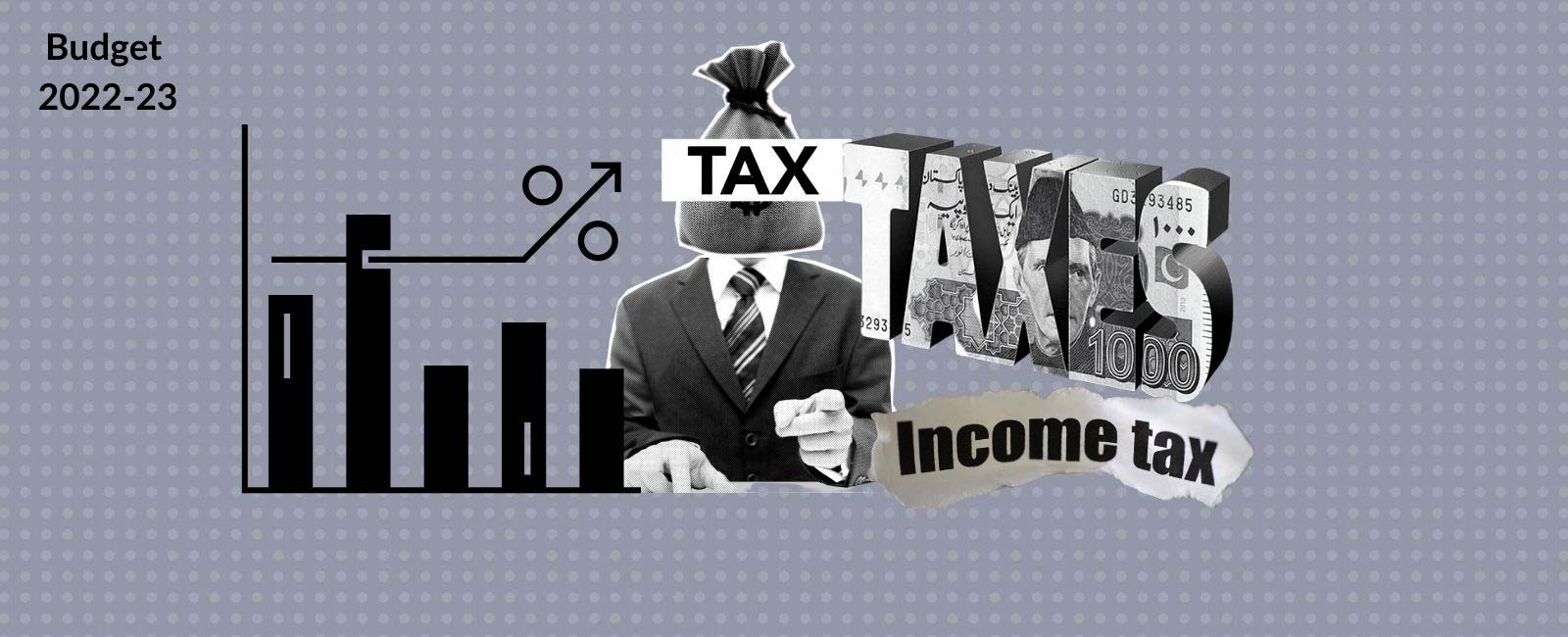Budget 2022-23: IMF tax proposals to increase burden on salaried class
Under current taxation system, a labourer pays the same GST on a packet of biscuits as the richest man in Pakistan

The government is sailing towards the International Monetary Fund (IMF) programme and the preconditions for doing so are being met steadily.
Recently, the discount rate has been increased by 150 basis points to 13.75% and now the petrol price has been increased by Rs60 per litre in a week. These steps are unpopular yet necessary as the IMF programme is extremely critical for the solvency of the economy.
However, the above-mentioned corrective steps might be just the tip of the iceberg. The fuel prices are expected to stay on the upward trajectory and electricity charges will follow suit.
Another important policy recommendation by the global lender will be in the form of increased income tax in the upcoming budget for the next fiscal year 2022-23.
These policy recommendations will arguably increase tax revenue of the country
In the conditions released in February, the IMF revealed the following guidelines for Personal Income Tax (PIT):
(i) reduce both the number of rates and income tax-brackets;
(ii) reduce tax credits and allowances (except those for disabled and senior citizens, and Zakat receipts);
(iii) introduce special tax procedures for very small taxpayers;
(iv) bring additional taxpayers into the tax net. Low-income households will remain protected as the reform preserves the current PIT threshold (almost three times income per capita)
Read more: Plan to jack up govt officials' salaries by 5-15% under consideration
These policy recommendations for the upcoming budget, if implemented, will simplify the taxation system and make the income tax regime more progressive. Let’s discuss the policy recommendations in more detail below.
Reduction in both the number of rates and income tax brackets, along with reduction in tax credits and allowances
These policy recommendations will arguably increase tax revenue of the country. It will also make the system more progressive and those who earn more will pay more.
However, it will increase the burden on the salaried class which is already heavily taxed. It will create a disincentive to work as a major chunk of the salary will be allocated for direct personal income tax.
Introduction of special tax procedures for very small taxpayers and bring additional tax payers into the tax net
These two recommendations are very critical. These measures can solve the long-term structural problem of Pakistan and may help correct internal and external imbalances. Our tax to gross domestic product (GDP) ratio has remained shy of 11% which is lower than regional averages. However, as per the IMF and World Bank, tax-to -GDP ratio has a potential to reach 23% to 26%, respectively.
Indirect taxes comprise two thirds of our total taxation. This high amount of indirect taxation is not only absurd, but it makes the system less progressive. A labourer pays the same amount of goods and services tax (GST) on a packet of biscuits as the richest man in Pakistan.
Read more: Pakistan must tap into telecom sector to power economic growth
Secondly, agriculture contributes almost as much as industry in the GDP, yet the industry pays 75% of direct taxes and agriculture pays less than 1%.
Similarly, a huge amount of money is being made in the real estate sector with negligible taxation.
The agriculturalists and the real estate barons are the major consumption engines of imports. Therefore, the inherent imbalances in the external sector are also seeded in the lack of taxation in agriculture and real estate.
Rich must get ready to pay their due share of taxes otherwise the country will find itself again on the doorsteps of the IMF soon
After the government unveils the upcoming budget, low income households are expected to remain insulated from the policy interventions as the Personal Income Tax (PIT) threshold of three times per capita income will remain in place.
With all the above mentioned in consideration, genuine taxpayers can also reduce their tax liabilities through smart investments as per Income Tax Ordinance 2001.
Read more: Govt signals growth slowdown, foresees 5% GDP growth in FY23
First of all, Zakat payments can reduce tax liability by 100% of the Zakat amount. So, people with religious inclination can reduce their tax liabilities through their Zakat payments.
Payments to other charitable institutions can also reduce tax liability by the amount of payments or 30% of total tax liability whichever is lower. This is covered under Section 61 of the income tax ordinance
Similarly, investments in mutual funds and life insurance policies can also reduce tax liability by actual amount — 20% of taxable income or Rs2 million, whichever is lower under section 62 of income tax ordinance.
These investments generally offer competitive returns and present the added advantage of reducing tax liabilities.
Over and above these avenues, investments in pension funds can also reduce tax liability by actual amount or 20% of taxable income, whichever is lower under section 63 of income tax ordinance.
Other than these savings, other advance taxes covered under section 231-236 (various subsections) of income tax ordinance can also reduce tax liabilities of the already burdened tax payers.
Policy makers must try and increase the tax net and raise the tax-to-GDP ratio in the next fiscal year 2022-23. There is no other way for the country to survive. The rich and the able must get ready to pay their due share of taxes otherwise the country will find itself again on the doorsteps of the IMF soon.
Sajjad is a senior banker and teaches economics.




